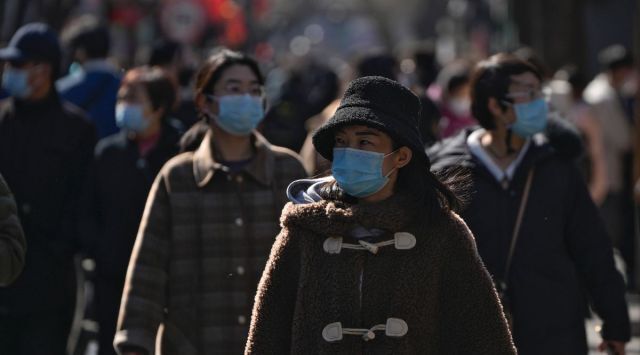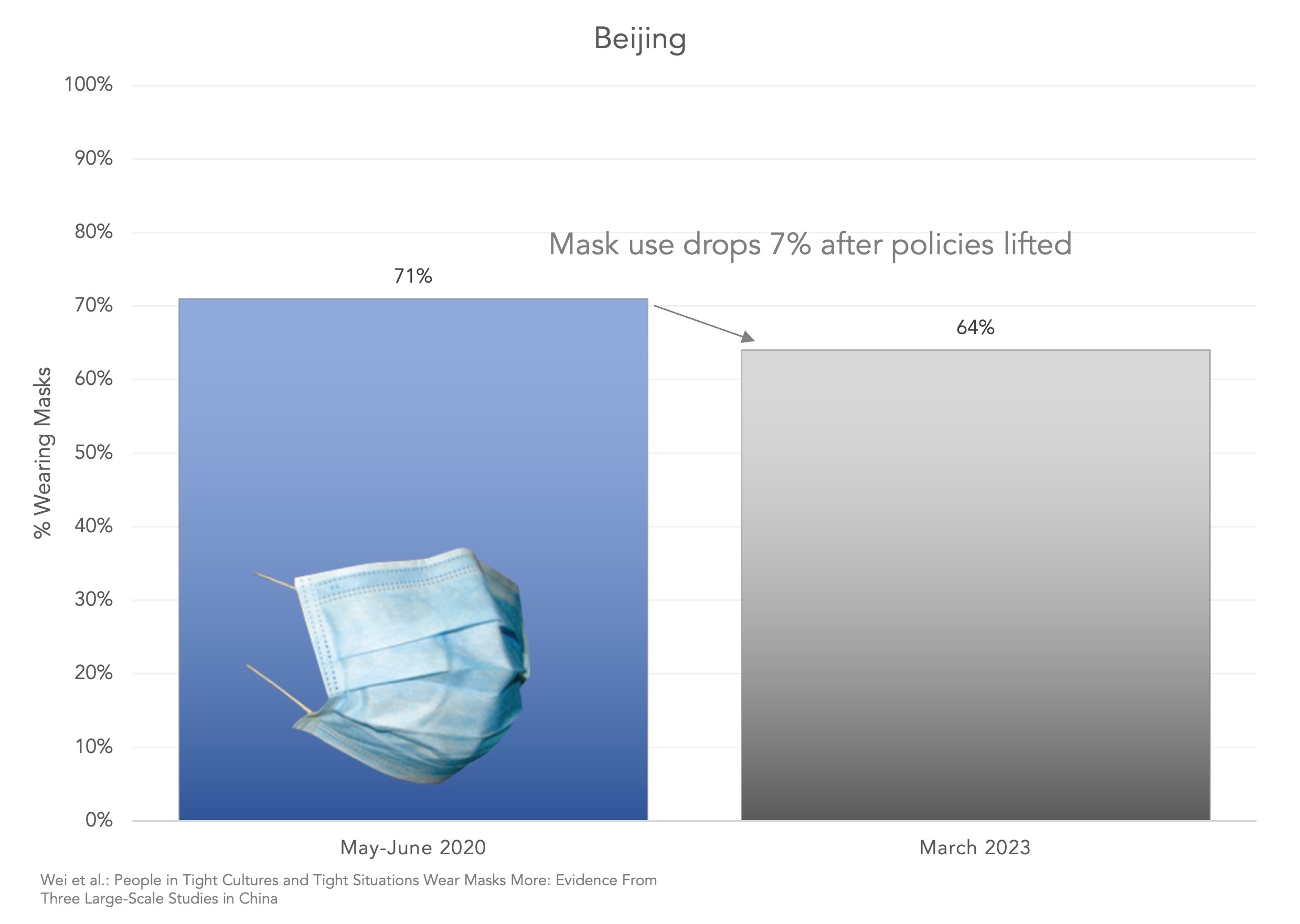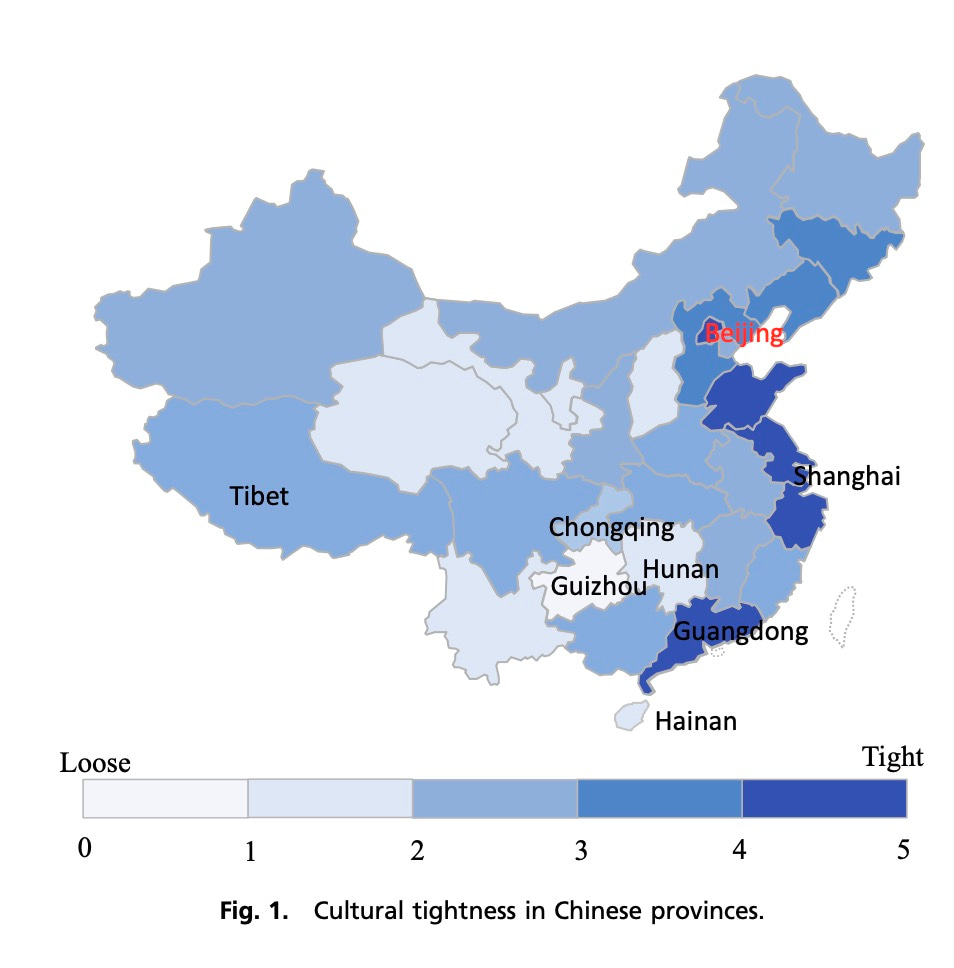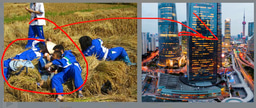How Many People Ditched Their Masks When China Ended "Zero Covid?"
Published in Public Health, Behavioural Sciences & Psychology, and Economics

Explore the Research
01461672231210451?utm_campaign=related_content&utm_source=HEALTH&utm_medium=communities
Masks were a divisive topic during the Covid pandemic, and that led researchers to look into who wore masks and why. A lot of that research relied on surveys simply asking people how often they wore masks. But people lie. Or they exaggerate. There’s social pressure.
So my research team braved the social awkwardness of staring at people in public and counted the real-life mask use. In total, we stared at over 23,000 people across China. Our task was simple. We counted how many people were actually wearing masks or not.
Do Science; Don't Be Creepy
We went to four types of places--sidewalks, parks, subways, and malls. Here are some pictures of the actual places our team went.
We started in the summer of 2020. With no vaccine in sight, the pressure to wear masks was high. Then we measured again in March, 2023. That was four months after China finally ended its “zero Covid” policy.
That data allows us to see how people’s behavior changed after the formal rules end. Did people keep wearing masks, or do they rip them off and say “good riddance?”
We went all over China, so we weren’t just looking at the cities most Americans have heard of, like Beijing or Shanghai.
Did People Drop Their Masks?
Mask use dropped after China lifted its policies. That’s not a surprise. But you might be surprised at how high it still was. In Beijing, mask use dropped from 71% to 64%. That’s still a majority of people wearing masks!

In Shanghai, it dropped more, from 61% to 38%. In Wuhan, it dropped the most, from 76% to 45%. That’s interesting because Wuhan was the center of the breakout.
Tightness-Looseness
That suggests there was something besides force and rules that was keeping people wearing masks. We found two factors that explained the differences—situations and culture.
Cultural psychologists talk about “tightness” and “looseness.” Tight cultures have strict social norms about how to behave. That means things like implicit pressure not to eat at church and explicit rules, like Singapore's restrictions on chewing gum.
Some types of places are tight; some are loose. Psychologists quantified this by asking regular people to rate different types of places. People tended to rate subways and malls as tighter, but parks and streets as looser. People rate funerals as one of the tightness situations.
That lined up with our data—well, not the funerals part. We had our limits. But people did wear masks more in malls and subways.
It makes sense to have tighter norms in malls and subways because they are more risky for spreading Covid than outdoor spaces (although China’s mask policies applied to parks too).
But it’s not just situations that tend to be tight or loose. Cultures do too. For example, surveys have found that Singapore tends to be tighter, and Australia and New Zealand tend to be looser. In Australia and New Zealand, some visitors have been shocked to see people shopping barefoot in the grocery store and barefoot students in some schools.
We could test tightness in China because researchers measured tightness-looseness across the country in a large survey (before the pandemic). We used their data and found that it could help explain people’s mask use.

First, people in cities in tighter provinces (like Shanghai) tended to wear masks more than people in looser provinces provinces (like Chengdu). Tightness also explained the change in mask use. People in cities in looser provinces dropped their mask use more than cities in tighter provinces.
That could explain why Wuhan dropped so fast after the restrictions ended, despite being the early epicenter of the disease. Wuhan is in Hubei Province, which is looser than many of the other places we observed, like Shanghai and Guangdong. That suggests formal rules may be more important for propping up mask use in places with loose norms.
Bottom line: Our data from China suggests that at least some people still wear masks after the rules go away, and the tightness of situations and cultures can help explain why some people drop their masks faster than others.
You can check out more details (and download our data!) at the journal Personality and Social Psychology Bulletin:
https://journals.sagepub.com/doi/abs/10.1177/01461672231210451





Please sign in or register for FREE
If you are a registered user on Research Communities by Springer Nature, please sign in
The paper is available to download without a paywall at the Social Science Research Network: https://papers.ssrn.com/sol3/papers.cfm?abstract_id=5424001